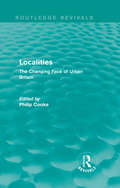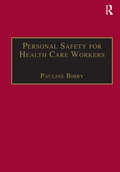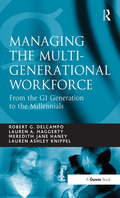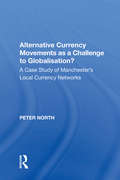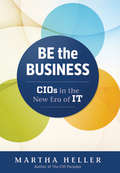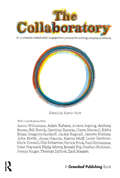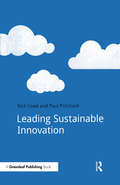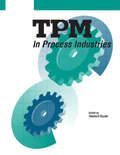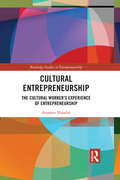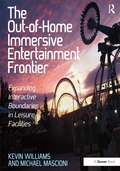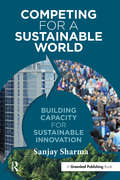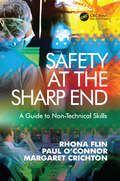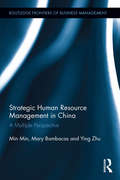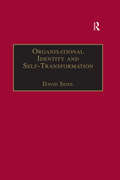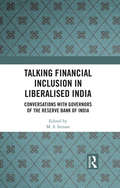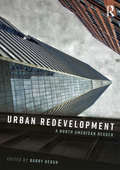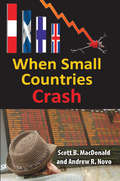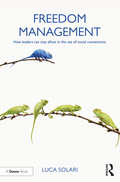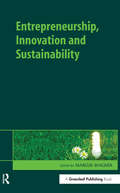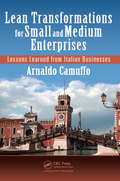- Table View
- List View
Hard Choices, Soft Law: Voluntary Standards in Global Trade, Environment and Social Governance (Global Environmental Governance)
by Michael J. Trebilcock John J. KirtonAn important read for academics and policy-makers alike, Hard Choices, Soft Law asserts that voluntary standards, or 'soft' law, are an important supplement to international law in a number of areas. This key work firstly outlines the approach taken to combining soft and hard law and trade, environment and labour values in the WTO and NAFTA, and in the prospective Millennium Round. Then, using the forestry sector - a realm where formal international law remains largely absent - the book provides a detailed examination of the role of soft law in action. It demonstrates how soft and hard law can be combined to promote trade, environmental and social cohesion, in ways that also permit sustainable development. The book presents a wealth of knowledge from a range of contributors familiar with the work of the G7/G8, the OECD, the Biodiversity Convention and the Codex Alimentarius.
Routledge Revivals: The Changing Face of Urban Britain (Routledge Library Editions: Social Theory Ser.)
by Philip CookeFirst published in 1989, this book examines seven different localities, ranging from the outer suburbs of large northern cities to small freestanding town, which were prospering in the 1980s or struggling against the negative employment effects of restructuring. Within the theoretical frame of ‘industrial restructuring’, it traces the development of each locality, exploring in depth the influence of several key elements — deindustrialisation, technological change, the shift to the services in employment — on social composition, political change and local policy. A major contribution to locality studies, this book is essential reading for students of urban and regional studies, and sociology.
Personal Safety for Health Care Workers (Published in association with Suzy Lamplugh Trust)
by Pauline BibbyThis book is aimed at employers, managers and professional and administrative staff in the health care services. GP practices, home visits and the hospital are all covered. Despite growing evidence of violence against health care workers, some employers have been slow to acknowledge the risks faced in both primary and secondary health care settings. Personal Safety for Health Care Workers provides the tools to investigate the risks involved and to develop policy and practice to ensure staff safety. It also deals with the vexed question of under-reporting. Part I deals with the respective roles and responsibilities of employers and employees and offers guidance on developing a workplace personal safety policy. Workplace design and management are addressed and guidelines provided for health care workers when away from their normal work base. Part 2 gives detailed guidelines for use by individual workers in a variety of work situations. Part 3 considers training issues and contains a number of sample training programmes with handouts. The message of this book is that prevention is better than cure - proper attention to risk can reduce both the incidence of aggression and its development into violent acts. The aim is to achieve the dual effect of protecting health care workers, and also of providing services in a more sensitive way. Good practice implies a responsibility to ensure that health care can be delivered in conditions of safety for staff and patients alike.
Managing the Multi-Generational Workforce: From the GI Generation to the Millennials
by Robert G. DelCampo Lauren A. Haggerty Lauren Ashley KnippelFor the first time in history, four distinct and very different generations are working together. Generational conflict is one of the last bastions of acceptable discrimination in today's workplace. Each generation has different beliefs, expectations, values, learning styles, and desires. These result in a strong tendency for them to adopt different work habits. Managing employees of several generations is not an easy task, but it is the reality of the business world today. The creation of a culture and coordinating programs that foster communication and collaboration between all of the generations present in the workforce will help to alleviate the difficulties managers may encounter. In order to truly create a cohesive workplace, managers must encourage employees to view generational difference as a valuable strength rather than a weakness. Based on rigorous academic research, Managing the Multi-Generational Workforce identifies the characteristics of the different generations, considers their expectations and values, and how these influence the way they relate to each other. The authors then examine implications for organizational culture and structures, recruitment and retention tactics, training, and management styles and approaches. This book actually tackles the issue of properly integrating the newest generation - the 'Millennials', into the workforce and challenges the unrealistic belief that all that needs to happen is for younger generations to be 'changed' to conform to workforce norms. As younger generations enter the workforce, and eventually dominate it, workforce norms will change. Any firm or manager competing in today's war for top talent will find this book indispensable.
Alternative Currency Movements as a Challenge to Globalisation?: A Case Study of Manchester's Local Currency Networks (Ashgate Economic Geography Ser.)
by Peter NorthOver the past 15 years, local money networks, which are essentially trading networks using a community-created currency, have emerged in countries as far apart as Argentina, Australia and New Zealand, Canada and the US, continental Europe and Japan. They range from Local Exchange Trading Schemes (UK), to Time Dollars (US), Green Dollars (New Zealand, Australia and Canada), Trading Circles (Hungary), Barter Networks (Argentina) and Talents (Germany). Drawing on an ethnographic case study of alternative currency movements in Manchester, UK, this book provides an analysis of the motivations, aims, successes and failures of alternative currency networks. It also raises questions such as the contribution of the alternative currency movement to current debates about alternatives to neoliberalism. While it is theoretically informed, critical and grounded in fieldwork, it is also sympathetic to the political aims of the protagonists and cognisant of the non-economic benefits that arise from their development.
Be the Business: CIOs in the New Era of IT
by Martha HellerRemember the '70s? Way back then, IT was a mainframe that sat in some room and only a few people had a key. Flash forward a decade, and IT was a limited set of systems irrelevant to the vast majority of employees and customers. But today, all of the sudden, technology belongs to everyone. Because of the suddenness of this revolution in technology adoption, most IT organizations have not had enough time to evolve into a "comfortable integration" with the rest of the company. This lack of comfortable integration has led to confusion over who is truly accountable for the return on technology investments, how much influence IT leaders should have over a company's business strategy, and whether CEOs need to hire Chief Digital Officers onto their senior leadership teams. Through interviews with dozens of CIOs, Heller has created a snapshot of what CIOs are doing to lead IT in a climate where technology belongs to everyone. She addresses how CIOs are changing their operating models, their approaches to talent development, and their assessment of the new IT provider marketplace. Most importantly, Heller defines the top ten skills and behaviors that CIOs will need to develop if they are going to be successful in an ever changing landscape. As a master storyteller, Heller incorporates philosophy, humor, and pragmatic advice into a book that both informs and entertains.
The Collaboratory: A Co-creative Stakeholder Engagement Process for Solving Complex Problems
by Adam Kahane John North Paul Shrivastava Zaid Hassan Stephen Hickman Peter Hayward Ronald Fry Philip Mirvis Eddie Blass Claire Maxwell Katrin Muff Aaron Williamson Anders Aspling Anthony Buono Bill Burck Caroline Rennie Gregoire Serikoff Jackie Bagnall Janette Blainey Jonas Haertle Louie Gardiner Mark Drewell Otto Scharmer Patrick Frick Svenja Rüger Thomas DyllickThe introduction is free to download here.This book is about empowering ordinary people to make a difference in the world. It explores the transformation that emerges when groups spread around the world working on similar issues discover synchronicities, often cross-pollinating, and collaborate rather than compete. A Collaboratory is a facilitated space where stakeholders meet to discuss burning societal issues. Each collaboratory is different and needs to be carefully designed to fit the context, ambition, purpose, stakeholders, culture, and space.Part 1 of the book sets the stage by explaining what a collaboratory is, where it emerges from, how it is defined and how it fits into the larger context of the social lab revolution that is happening all over the world.Part 2 of the book unpacks the many dimensions and considerations that contribute to the magic of a collaboratory experience. We offer nine unique insights and perspectives that need to be considered and form an integral part of a successful collaboratory.Part 3 offers eight inspiring examples of how a collaboratory could be applied. We look at applications in the educational field, within organizations, among institutions, and as movements.Part 4 offers a pragmatic outlook on how to get started if you want to use the Collaboratory in your own field of work. The book offers a narrative roadmap using a real-life example of a co-designed and co-created Collaboratory in Norway.Offering practical recommendations and benefits, and bringing together insights from a range of experienced academics, practitioners and facilitators, The Collaboratory is a handbook for experienced or aspiring practitioners in all fields of change: in society, in organizations of all kind and in the field of education.
Leading Sustainable Innovation
by Paul Pritchard Nick CoadSustainability will play an increasingly key role in the innovation process within businesses. Leading companies are already integrating these agendas, and preparing their sustainability executives to take the lead. This book demonstrates why sustainability requires innovation; explains how this opportunity can be grasped by sustainability executives; outlines the skills they will need to learn to lead on sustainable innovation; and outlines key trends in sustainable innovation and in managing innovation. Coad and Pritchard provide an overview of mainstream innovation, and draw out common characteristics of successful programmes, such as a corporate culture whose systems promote innovation. They highlight developments such as mobile technology, social media and collaborative consumption which transform the way consumers interact with companies. Viewed alongside emerging ideas on sustainability, such as the circular economy, this points to a clear need for a new set of innovation skills. Companies will face challenges in realizing these opportunities, in particular the development requirements for sustainability executives and broader organizational learning. This book is for companies who want to take advantage, and the sustainability executives who will be leading the way.
Giving Voice to Values in the Legal Profession: Effective Advocacy with Integrity (Giving Voice to Values)
by Carolyn PlumpEthical issues do not occur in isolation. Instead, real-life situations arise in the workplace alongside other pressing issues such as job security, career advancement, peer pressure, manager evaluations, and company profits. For this reason, students and employees in law need concise and common sense guidance that provides a framework for how to voice one's values in the midst of competing interests. This book does just that. By providing twelve accessible scenarios drawn from real-life examples, this book walks readers through some of the most common ethical issues they will face in the workplace and how to address them in a manner that is realistic and effective. There are two clear reasons to read Giving Voice to Values in the Legal Profession. First, it is practical. The book presents information that is readily useful to students as they move forwards in their personal lives and careers. Second, the book is concise and easy to add to an existing course. It can provide a context for discussing a myriad of issues around ethics in the legal profession.
TPM in Process Industries
by Tokutaro SuzukiProcess industries have a particularly urgent need for collaborative equipment management systems, but until now have lacked for programs directed toward their specific needs. TPM in Process lndustries brings together top consultants from the Japan Institute of Plant Maintenance to modify the original TPM Development Program. In this volume, they demonstrate how to analyze process environments and equipment issues including process loss structure and calculation, autonomous maintenance, equipment and process improvement, and quality maintenance. For all organizations managing large equipment, facing low operator/machine ratios, or implementing extensive improvement, this text is an invaluable resource.
Cultural Entrepreneurship: The Cultural Worker’s Experience of Entrepreneurship (Routledge Studies in Entrepreneurship)
by Annette NaudinThis book explores the lived experience of cultural entrepreneurship examining the challenges associated with cultural labour including the insecurities of managing precarious working conditions. Drawing on interviews conducted with cultural workers, Cultural Entrepreneurship focuses on how individuals articulate their experience of entrepreneurship in the cultural and creative industries. Noting the importance of place, the local cultural milieu is examined as a means of situating entrepreneurial practices through cultural and enterprise policies, local networks, and significant relationships. Within this framework, the cultural entrepreneurs’ stories reveal means of subverting or re-interpreting identities and the possibility for ‘rethinking cultural entrepreneurship.’ Aimed at researchers, academics and students investigating cultural entrepreneurship, cultural policy and cultural labour, Cultural Entrepreneurship will additionally be of value to creative industry consultants, cultural policymakers, and those setting up creative enterprises. Researchers from fields such as geography, investigating different aspects of the cultural industries in relation to cultural policy and place, will also find this book to be a useful contribution.
The Out-of-Home Immersive Entertainment Frontier: Expanding Interactive Boundaries in Leisure Facilities
by Kevin Williams Michael MascioniDigital Out of Home Entertainment is rather an arcane description for one of the fastest growing technology-sectors. These forms of interactive technology, often established on a 'pay per use' basis are transforming the customer experience in shops, cinemas, museums; almost any environment where consumers are congregating. Kevin Williams and Michael Mascioni's The Out-of-Home Immersive Entertainment Frontier provides a 'state of play' exploration of the successes, the emerging new applications and the strategies that inform them. The authors interviewed nearly 70 leading executives from many familiar organisations in every facet of the digital out-of-home entertainments industry. The result is an essential guide for entertainment executives as well as those involved in retailing, the hotel industry, mobile communications, museums and heritage.
Bank Regulation: Effects on Strategy, Financial Accounting and Management Control (Routledge Studies in Accounting)
by Fredrik Nilsson Anna-Karin StockenstrandBank Regulation: Effects on Strategy, Financial Accounting and Management Control discusses and problematizes how regulation is affecting bank strategies as well as their financial accounting and management control systems. Following a period of bank de-regulation, the new millennium brought a drastic change, with many new regulations. Some of these are the result of the financial crisis of 2008-2009. Other regulations, such as the introduction in 2005 of International Financial Reporting Standards (IFRS) for quoted companies in the EU, can be related to the introduction of a new global accounting regime. It is evident from annual reports of banks that the number of new regulations in recent years is high and that they cover many different functional areas. The objectives of these regulations are also ambitious; to improve governance and control, contributing to a high level of financial stability for banks. These objectives are obviously of great concern for an industry that directly and indirectly affects the financial situation not only of individuals and organizations but also nation states. Considering the importance of banks in society, it is of little surprise that the attention of both scholars and practitioners has been directed towards how banks comply with new regulations and if the intended objectives of the regulations are met. This book will be of great value to all those interested in financial stability matters (practitioners, policy-makers, students, academics), as well as to accounting and finance scholars.
The Philosophy of Management Research (Routledge Advances in Management and Business Studies)
by Eric W.K. TsangThe field of management research is commonly regarded as or aspires to be a science discipline. As such, management researchers face similar methodological problems as their counterparts in other science disciplines. There are at least two ways that philosophy is connected with management research: ontological and epistemological. Despite an increasing number of scattered philosophy-based discussions of research methodology, there has not been a book that provides a systematic and more comprehensive treatment of the subject. This book addresses this gap in the market and provides new ideas and arguments for guiding management researchers.
Competing for a Sustainable World: Building Capacity for Sustainable Innovation
by Sanjay SharmaSustainable innovation requires more than a clear vision and commitment. It requires effective execution and implementation based on an ongoing systematic process of engaging stakeholders to generate the evolving information critical for guiding decision-making, developing and implementing business logic for sustainable innovation, overcoming decision-making biases by managers, creating an opportunity framework to spark creativity, and developing effective organizational capabilities to build a sustainable innovation DNA within the organization. Such a capacity provides an organization with the ability to anticipate and overcome internal and external barriers and achieve competitive advantage through sustainable innovation of products, services, and business models. Based on original research, current state-of-the-knowledge, and relevant examples, this book comprehensively outlines and describes the process that managers can undertake to effectively and successfully implement a sustainability strategy that will help them attract and retain managerial talent; increase operating legitimacy and reduce compliance costs; boost stakeholder support; reduce costs through increased efficiency, quality, reliability, safety, and responsiveness of existing operations; foster radical innovations in processes, products, services, and new markets; and promote competitive imagination of future products, services, and business models.
Safety at the Sharp End: A Guide to Non-Technical Skills
by Paul O'Connor Rhona FlinMany 21st century operations are characterised by teams of workers dealing with significant risks and complex technology, in competitive, commercially-driven environments. Informed managers in such sectors have realised the necessity of understanding the human dimension to their operations if they hope to improve production and safety performance. While organisational safety culture is a key determinant of workplace safety, it is also essential to focus on the non-technical skills of the system operators based at the 'sharp end' of the organisation. These skills are the cognitive and social skills required for efficient and safe operations, often termed Crew Resource Management (CRM) skills. In industries such as civil aviation, it has long been appreciated that the majority of accidents could have been prevented if better non-technical skills had been demonstrated by personnel operating and maintaining the system. As a result, the aviation industry has pioneered the development of CRM training. Many other organisations are now introducing non-technical skills training, most notably within the healthcare sector. Safety at the Sharp End is a general guide to the theory and practice of non-technical skills for safety. It covers the identification, training and evaluation of non-technical skills and has been written for use by individuals who are studying or training these skills on CRM and other safety or human factors courses. The material is also suitable for undergraduate and post-experience students studying human factors or industrial safety programmes.
Strategic Human Resource Management in China: A Multiple Perspective (Routledge Frontiers of Business Management)
by Ying Zhu Min Min Mary BambacasThis book documents and explains how strategic human resource management (SHRM) and high performance work systems (HPWS) have been adopted among indigenous enterprises, namely state-owned enterprises (SOEs) and domestic private enterprises (DPEs) in China, from both management and employee perspectives. The book examines the mutual relationships between employees and their supervisors/ managers through social exchange theory. It explains how and why employees develop their perceptions and relationships with their immediate supervisors/managers in the working environment and the consequent effects on their attitudes and behaviour at work. Given the importance of the Chinese economy in the world, and the impact of its ‘open door’ policy and economic and management reforms, this book will provide valuable insight into China’s SHRM and HPWS.
Organisational Identity and Self-Transformation: An Autopoietic Perspective
by David SeidlDavid Seidl brings together two important issues in organization and management studies in this volume: the concept and related theory of organizational identity, and autopoietic organization theory (as originally developed by Niklas Luhmann). The contribution of the book is twofold: it provides an introduction to autopoietic organization theory and it provides a new perspective on organizational identity and self-transformation. Thus the book is relevant to both organization theorists interested in new approaches to organization and to researchers of organizational identity. The themes are reflected in the structure of the book. Chapters one and two provide an introduction to Niklas Luhmann's organization theory. Based on this, chapter three develops a new concept of organizational identity. In chapters four and five a theory of organizational self-transformation (i.e. change of identity) is developed.
Talking Financial Inclusion in Liberalised India: Conversations with Governors of the Reserve Bank of India
by M. S. SriramThis book presents a set of conversations with five former Governors of Reserve Bank of India (from 1992 onwards) on the topic of financial inclusion. Two key aspects are introduced in the conversations with each Governor: the initiatives that were undertaken during their tenure and their responses to some of the current issues. Further, they examine the reasons and justifications for significant decisions and measures that were undertaken or withheld. The discussion captures the evolution and approach of the central bank in addressing a variety of questions pertaining to financial inclusion. The volume is an important contribution to the study of India’s continuous but not entirely successful efforts in increasing the reach of its formal financial sector. It reconstructs how the policy approach to inclusive banking has progressed and resisted commercial and market imperatives to safeguard the deprived and dispossessed sections of society. With its wide-ranging blend of conversations, documentation, research and commentary coupled with its engaging style, the book will interest students and researchers in the areas of development, banking, macroeconomics, public administration and governance, as well as academics, analysts, policymakers, think tanks, journalists, media and those concerned with the Indian economic policy.
Urban Redevelopment: A North American Reader
by Barry HershUrban redevelopment plays a major part in the growth strategy of the modern city, and the goal of this book is to examine the various aspects of redevelopment, its principles and practices in the North American context. Urban Redevelopment: A North American Reader seeks to shed light on the practice by looking at both its failures and successes, ideas that seemed to work in specific circumstances but not in others. The book aims to provide guidance to academics, practitioners and professionals on how, when, where and why, specific approaches worked and when they didn’t. While one has to deal with each case specifically, it is the interactions that are key. The contributors offer insight into how urban design affects behavior, how finance drives architectural choices, how social equity interacts with economic development, how demographical diversity drives cities’ growth, how politics determine land use decisions, how management deals with market choices, and how there are multiple influences and impacts of every decision. The book moves from the history of urban redevelopment, The City Beautiful movement, grand concourses and plazas, through urban renewal, superblocks and downtown pedestrian malls to today’s place-making: transit-oriented design, street quieting, new urbanism, publicly accessible, softer, waterfront design, funky small urban spaces and public-private megaprojects. This history also moves from grand masters such as Baron Haussmann and Robert Moses through community participation, to stakeholder involvement to creative local leadership. The increased importance of sustainability, high-energy performance, resilience and both pre- and post-catastrophe planning are also discussed in detail. Cities are acts of man, not nature; every street and building represents decisions made by people. Many of today’s best recognized urban theorists look for great forces; economic trends, technological shifts, political movements and try to analyze how they impact cities. One does not have to be a subscriber to the "great man" theory of history to see that in urban redevelopment, successful project champions use or sometimes overcome overall trends, using the tools and resources available to rebuild their community. This book is about how these projects are brought together, each somewhat differently, by the people who make them happen.
When Small Countries Crash
by Andrew Novo Scott B. MacDonaldThe public is fascinated with financial crashes. Historians portray the roar of an angry mob toppling presidents or prime ministers and destroying the property of those who are regarded as malefactors. And certainly, financial crisis is often a factor in political change. It is often overlooked, but nonetheless significant that one of the major causes for the French Revolution was the poor state of finances, with the nation coming to bankruptcy.Large systemic financial crises create history. Various actors, big and small, become caught in the drama, contributing to it in their own special way. When Small Countries Crash seeks to capture some of the drama of financial collapses and their impact on small countries, which the authors define as populations under 10 million, generally 5-6 million. MacDonald and Novo have selected countries that have had a financial crisis in the national economy; that included key actors; and where access to reliable data is available.As the authors demonstrate, the story of small countries suffering the costs of financial missteps is long and painful. They argue that smaller economies tend to be more vulnerable to economic shocks, many of which are externally generated. Small economies confront particular challenges in terms of economies of scale, diversification, and depth of expertise and workforce. The chapters in this absorbing book focus on Iceland, Latvia, Ireland, the Caribbean, Scotland, Finland, and Albania. This in-depth study is unique in its close look at financial disasters in countries that have, until now, been overlooked.
Freedom Management: How leaders can stay afloat in the sea of social connections
by Luca SolariModern management theory has been established on the ashes of Taylorism, emphasizing control over accountability, conformity over uniqueness, and constraint over freedom. Leadership and management theories and the practical approaches of this age of society can be understood as an ongoing struggle to overcome the boundaries of such a concept of organizations and society. Also latter movements, like empowerment or the competence based waves of change have left what we do in organizations largely unscathed. Organizations today are often bereft of a strong leadership function and the result is a decline in overall engagement. Luca Solari contends that this is because the change ahead requires a complete reshuffling of our conceptions of what it means to run an organization, and this will not come without pain for those in charge of managing, who are unable to shift their roles. It comes as no surprise that the complex pattern of preexisting interests acts like a powerful shield against this change within government, society, and business organizations alike. This book provides an essential argument as to why contemporary organizations need to change and offers practical guidance on how to overcome the waves, while helping your organization to thrive in this new era of management. This book will appeal to leaders, as well as those involved in human resource management and organizational change.
Entrepreneurship, Innovation and Sustainability
by Marcus WagnerThis book addresses the intersection of entrepreneurship, innovation and sustainability (EIS), presenting high-quality research illuminating the relationship between the three fields. The EIS nexus is particularly relevant from a European point of view given the focus of the European Commission on corporate social responsibility (CSR) and sustainability, as well as their prominent role within the European Union in general. Also, the rapid economic growth witnessed especially in the BRIC countries in recent years requires that firms reconcile sustainability aspects with profitability and innovation, and entrepreneurs are seen as key diffusers of these aims. Sustainability requires both radical and incremental innovation at many different levels (technology, product, process, system). In many cases, such innovations come from small and medium-sized enterprises and so the role of the entrepreneur is key to their success. The book is split into six sections. The first section examines the nexus in detail focusing on system-oriented connectivity between sustainability, innovation and entrepreneurship. The second section looks at how to nurture corporate entrepreneurship for sustainability; and the third considers "mature" industries such as automotives, chemicals and electronics and how sustainability aspects can be integrated into innovation process and strategy. The fourth section examines the nexus through the lens of developing countries in Africa. Sustainable entrepreneurship is identified as a hugely beneficial way to foster development. The fifth section of the book concentrates on SMEs; and finally the EIS nexus is approached from a network perspective and focuses on inter-organisational partnerships, which are often an important facilitator or spark for EIS initiatives.This book will prove to be essential for researchers in the EIS nexus and be of invaluable help to practitioners, governments and inter-governmental bodies attempting to encourage sustainable entrepreneurship and innovation.
Lean Transformations for Small and Medium Enterprises: Lessons Learned from Italian Businesses
by Arnaldo CamuffoLean Transformations for Small and Medium Enterprises: Lessons Learned from Italian Businesses summarizes two decades of research, teaching, and practice on lean thinking. Based on quantitative analysis of 100 cases of Lean transformations and 20 in-depth case studies of successfully transformed SMEs, it explains how to undertake lean transformations that lead to operational and financial performance improvement, and uses the Lean Transformation Framework --conceptualized by John Shook at the Lean Enterprise Institute—as a practical approach to design and de-risk the transformation process. SMEs’ leaders wishing to undertake and sustain a lean transformation must: Make a serious and lasting commitment to transform, avoiding the temptation to change course of action; Choose accurately the value streams that require improvement as defined by strategy deployment; Build capabilities to sustain the transformation; Lead by example by going to gemba and creating a culture of respect for people that goes beyond the visible devices and artifacts of Lean tools.
Innovations in Behavioural Health Architecture
by Stephen VerderberInnovations in Behavioural Health Architecture is the most comprehensive book written on this topic in more than 40 years. It examines the ways in which healthcare architecture can contribute, as a highly valued informational and reference source, to the provision of psychiatric and addictive disorder treatment in communities around the world. It provides an overview of the need for a new generation of progressively planned and designed treatment centres – both inpatient and outpatient care environments – and the advantages, challenges, and opportunities associated with meeting the burgeoning need for treatment settings of this type. Additional chapters address the specifics of geriatric psychiatry and its architectural ramifications in light of the rapid aging of societies globally and provide a comprehensive compendium of planning and design considerations for these places in both inpatient and outpatient care contexts. Finally, the book presents an expansive and fully illustrated set of international case studies that express state-of-the-art advancements in architecture for behavioural healthcare.

